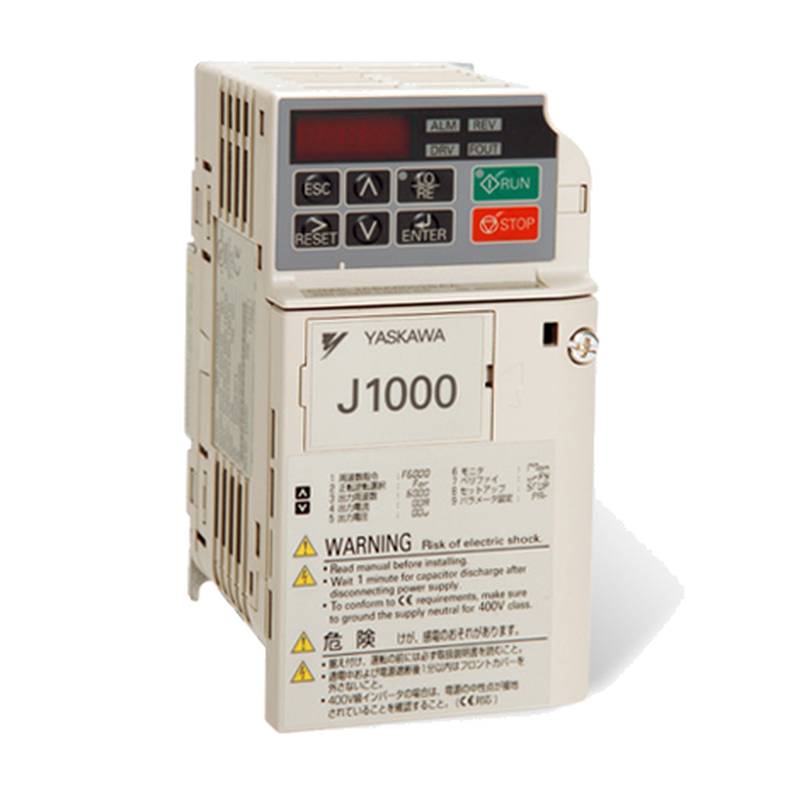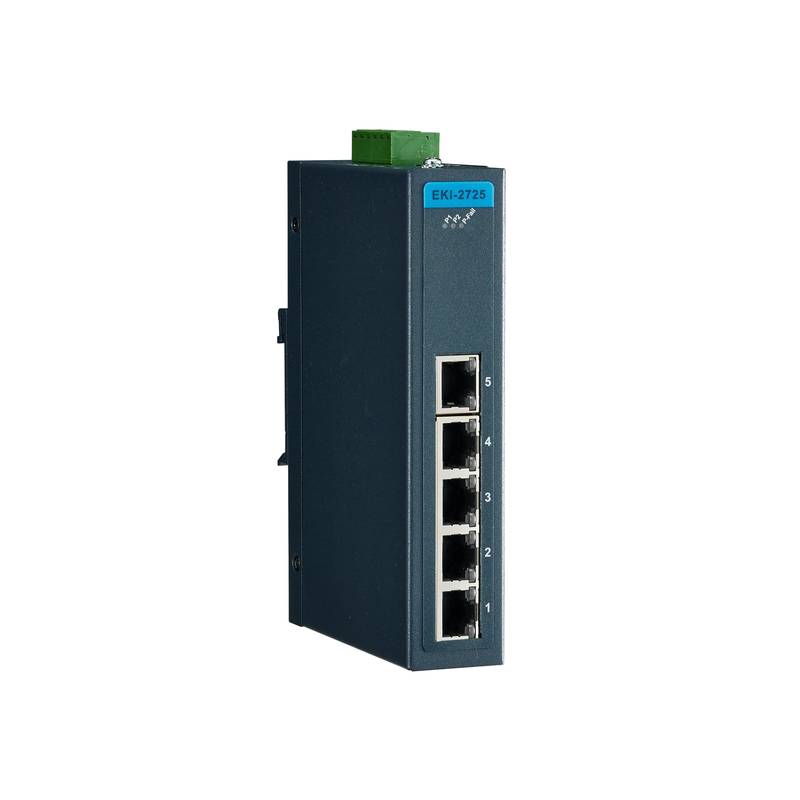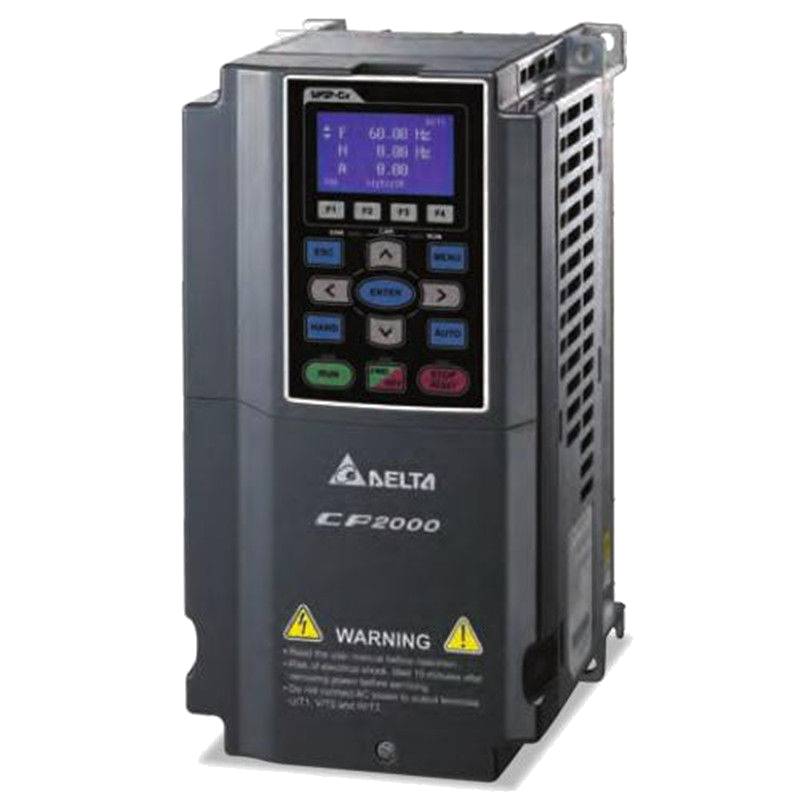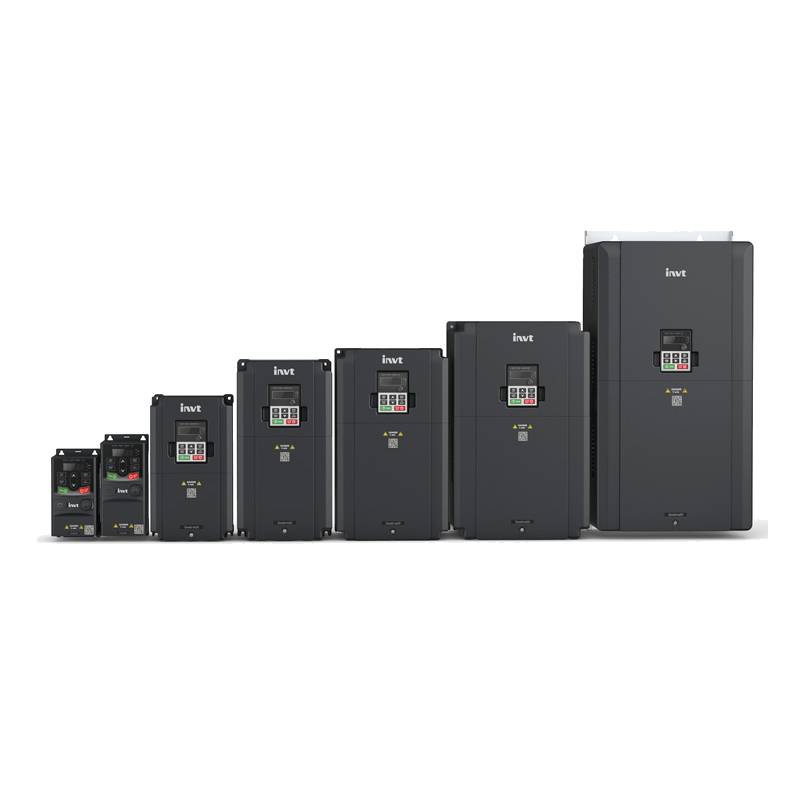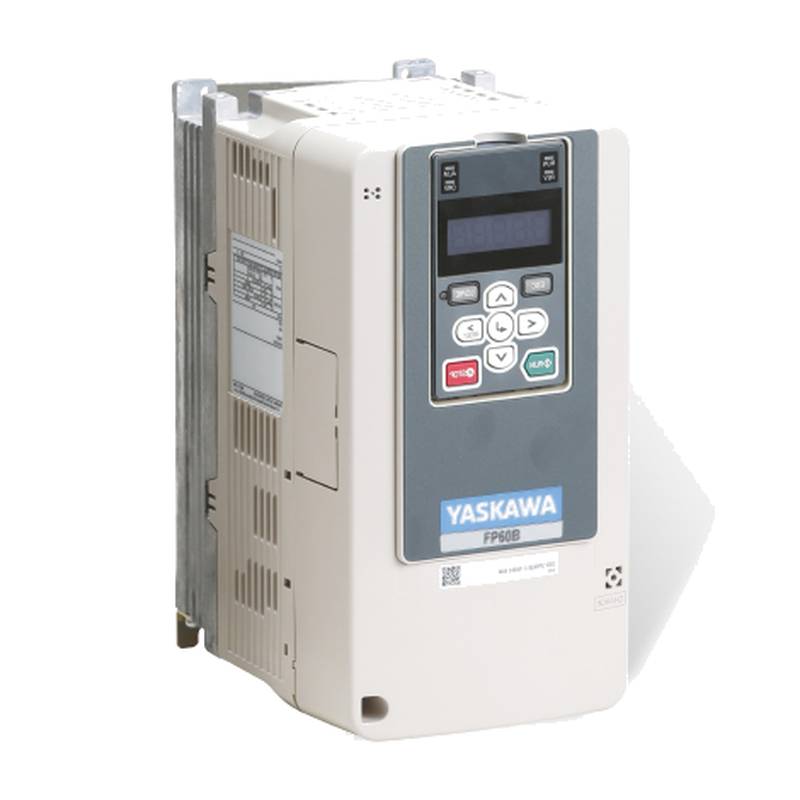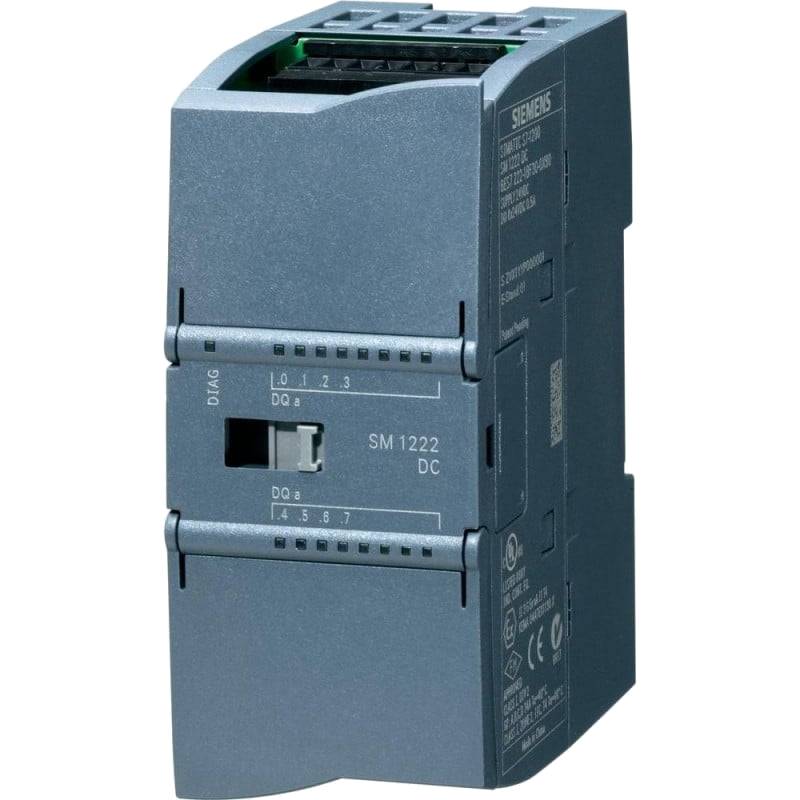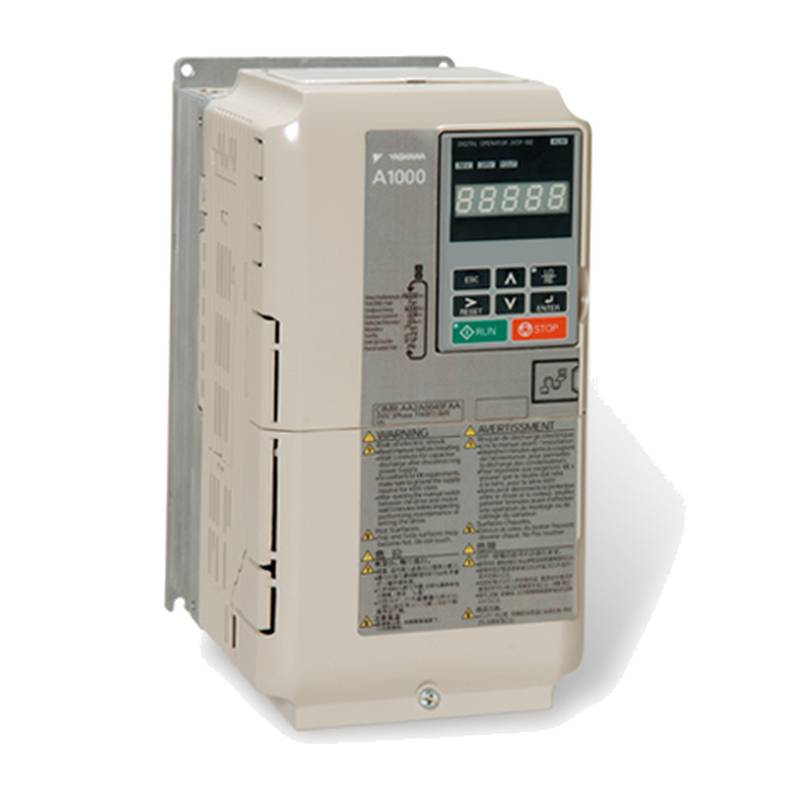
The YASKAWA J1000 Micro Vector Control Drive, model JB4A0005BBA, represents a compact yet powerful solution for variable speed control, delivering precise performance with a 1.5kW power output and a 4.8A current rating. This Variable Frequency Drive (VFD) is engineered for demanding industrial applications where accurate motor speed and torque management are paramount. Its micro-vector control technology ensures superior dynamic response and stable operation even under fluctuating loads, making it an ideal choice for a wide range of machinery. Key advantages include its small footprint, ease of integration, and robust build quality, all contributing to enhanced operational efficiency and reduced maintenance. The J1000 series distinguishes itself with user-friendly setup and advanced control algorithms that optimize energy consumption and motor longevity.
Product Specifications
| Parameter | Specification |
| :------------------ | :------------------------------------------- |
| Model Number | JB4A0005BBA |
| Series | J1000 Micro Vector Control Drive |
| Output Power | 1.5 kW |
| Rated Output Current| 4.8 A |
| Input Voltage | 200-240V AC, 1 Phase (typical configuration) |
| Output Frequency | 0 to 400 Hz |
| Control Method | Micro-vector Control, V/f Control |
| Protection Class | IP20 (typical) |
| Ambient Temperature | -10°C to +50°C (typical, derating may apply) |
| Mounting | Wall/Panel Mount |
Core Features & Market Positioning
The YASKAWA J1000 JB4A0005BBA stands out in the competitive VFD market due to its advanced micro-vector control, which offers a significant performance upgrade over traditional V/f control methods. This technology allows for precise torque control and rapid response to load changes, crucial for applications requiring high accuracy and efficiency. Yaskawa's reputation for reliability and innovation is embodied in the J1000 series, positioning it as a premium, yet cost-effective, solution for small to medium-sized motor control applications. Its compact design and simplified parameter settings also contribute to its market appeal, reducing installation time and complexity for integrators and end-users alike. The drive is built to withstand harsh industrial environments, further solidifying its market position as a durable and dependable component.
Key Application Scenarios
The versatility of the YASKAWA J1000 VFD makes it suitable for a broad spectrum of industrial applications. It excels in powering fans and pumps where precise flow and pressure control are necessary, leading to significant energy savings. In material handling systems, such as conveyors and automated guided vehicles, the drive's accurate speed and torque regulation ensure smooth and efficient operation. Manufacturing processes, including those in the food and beverage, packaging, and textile industries, benefit from the J1000's ability to provide consistent motor performance for machinery like mixers, extruders, and processing equipment. Its micro-vector control is also advantageous for machine tool applications requiring accurate positioning and dynamic response.
Practical System Integration Guidance
Integrating the YASKAWA JB4A0005BBA into an existing system is streamlined by its user-friendly design. Proper wiring is critical; ensure the input power supply is correctly connected to the L1 and L2 terminals and the motor to the U, V, and W outputs. Grounding the drive and motor is essential for safety and performance. Initial commissioning typically involves setting basic parameters such as motor nameplate data (voltage, frequency, current, RPM) and desired acceleration/deceleration times. For advanced control, enabling micro-vector mode and configuring specific I/O assignments for digital inputs/outputs and analog inputs can be achieved through the drive's intuitive keypad or programming software. Always consult the official Yaskawa manual for detailed wiring diagrams and parameter settings.
Operation and Risk Mitigation
Operating the YASKAWA J1000 JB4A0005BBA requires adherence to safety protocols. Always ensure the drive is de-energized before performing any wiring or maintenance. The drive is equipped with various protection functions, including overcurrent, overvoltage, undervoltage, and motor overload protection. Familiarity with common fault codes, such as E1, E2, or E3 (indicating overcurrent, overvoltage, or undervoltage respectively), is crucial for prompt troubleshooting. Regularly inspect connections for tightness and check for any signs of physical damage or overheating. Implementing appropriate emergency stop procedures and ensuring personnel are trained on safe VFD operation significantly mitigates operational risks.
Scalability & Long-Term Value
The YASKAWA J1000 JB4A0005BBA offers inherent scalability and long-term value through its robust design and compatibility with Yaskawa's broader ecosystem. While this specific model is optimized for individual motor control, its integration capabilities allow it to be part of larger automated systems. Future upgrades in control technology or communication protocols can often be accommodated with compatible modules or by migrating to newer Yaskawa platforms that maintain backward compatibility. The J1000's energy-saving features contribute to reduced operational costs over its lifespan. Its durability and Yaskawa's commitment to product support ensure a reliable long-term investment for industrial operations seeking efficient and precise motor control.
Frequently Asked Questions
1. What is the maximum power rating of the YASKAWA JB4A0005BBA?
The YASKAWA JB4A0005BBA J1000 drive is rated for a maximum output power of 1.5 kW. This power handling capability makes it suitable for a wide range of medium-duty industrial applications.
This specification directly dictates the size and type of motor it can effectively control. It's crucial to match the motor's power requirements to this drive rating for optimal performance.
Considerations for its use include ensuring the motor's full load current does not exceed the drive's 4.8A rating.
2. Can the YASKAWA J1000 JB4A0005BBA be used with single-phase input power?
Yes, the YASKAWA JB4A0005BBA is typically configured for a 200-240V AC, single-phase input power supply. This feature simplifies installation in locations where only single-phase power is available.
This makes it a highly accessible solution for smaller facilities or specific machine retrofits that may not have three-phase power readily accessible. Always verify the specific input voltage requirements in the product manual.
When using single-phase input, it's essential to ensure the drive's internal components are designed to handle the power conversion efficiently and reliably.
3. What type of motor control does the YASKAWA JB4A0005BBA utilize?
The YASKAWA JB4A0005BBA employs advanced Micro-Vector Control technology. This sophisticated control method provides precise torque and speed regulation, even under dynamic load conditions.
Compared to basic V/f control, Micro-Vector Control offers superior performance, particularly for applications demanding high accuracy, such as precise positioning or maintaining speed with fluctuating loads.
It allows the drive to operate the motor more efficiently, reducing energy consumption and extending motor life by minimizing stress.
4. What are the typical applications for this YASKAWA VFD?
This YASKAWA VFD is well-suited for applications like fans, pumps, conveyors, and small machine tools. Its precise control is ideal for maintaining consistent speed and torque.
Industries such as food processing, packaging, and general manufacturing often utilize this drive for equipment like mixers, extruders, and automated machinery.
The compact size and robust performance make it a versatile choice for various automation tasks where variable speed is beneficial.
5. How do I install the YASKAWA JB4A0005BBA?
Installation involves securely mounting the drive, ensuring adequate ventilation, and connecting the power input and motor output terminals as per the wiring diagram. Proper grounding is critical for safety and performance.
Commissioning typically requires setting motor parameters (voltage, frequency, current) and desired operational settings via the keypad or software. Basic parameter configuration is straightforward.
Always refer to the official Yaskawa installation manual for detailed instructions, including specific wiring procedures and safety precautions relevant to your environment.
6. What safety features are included in the JB4A0005BBA drive?
The drive incorporates essential protection features such as overcurrent, overvoltage, undervoltage, and motor overload protection. These safeguards help prevent damage to the drive and connected motor.
It is designed with safety in mind, requiring proper grounding and adherence to electrical codes during installation. Emergency stop functionality is usually integrated via external wiring.
Users should familiarize themselves with the drive's fault codes and troubleshooting procedures outlined in the manual to ensure safe and continuous operation.
7. Is the YASKAWA J1000 series scalable for larger systems?
While the JB4A0005BBA is a specific unit, the J1000 series is part of Yaskawa's broader product portfolio, allowing for integration into larger automated systems. Compatibility with communication modules enables networking.
Future system expansion might involve using multiple J1000 drives or migrating to higher-capacity Yaskawa drives while maintaining similar control philosophies. It supports a consistent approach to motor control across various applications.
The drive's robust build and Yaskawa's reputation suggest long-term reliability, making it a valuable component within a scalable industrial automation strategy.
8. What is the IP rating of the YASKAWA JB4A0005BBA?
The YASKAWA JB4A0005BBA typically features an IP20 protection class rating. This indicates protection against solid objects greater than 12.5 mm and no protection against water.
This rating means the drive is designed for installation within control cabinets or enclosures to protect it from direct contact and environmental contaminants. Adequate ventilation within the enclosure is important.
For environments with higher ingress protection requirements, alternative Yaskawa models or external enclosures would be necessary to maintain safe and reliable operation.
9. How does Micro-Vector Control differ from V/f control?
Micro-Vector Control offers superior motor performance by actively monitoring and controlling motor current to regulate torque, resulting in faster response and precise speed holding. V/f control, by contrast, sets voltage and frequency in a fixed ratio, which is less precise under varying loads.
This advanced control method enables the drive to maintain set speeds or torque levels even when the mechanical load changes significantly, which is crucial for dynamic applications. It optimizes motor efficiency.
The ability to deliver accurate torque control means the YASKAWA JB4A0005BBA can handle starting heavy loads more effectively and operate smoothly across its speed range.
10. Where can I find the official manual for the YASKAWA JB4A0005BBA?
The official operating manual for the YASKAWA JB4A0005BBA can be found on the Yaskawa Electric Corporation's official website. Searching for the model number "JB4A0005BBA" or "J1000" on their support or documentation portal should yield the relevant PDF.
Yaskawa's website typically offers comprehensive documentation, including installation guides, operating manuals, and parameter lists, which are essential resources for proper setup and maintenance. Ensure you download the manual specific to the J1000 series.
Accessing the official manual is critical for understanding detailed specifications, wiring diagrams, safety warnings, and troubleshooting procedures to ensure the drive is used correctly and safely.














